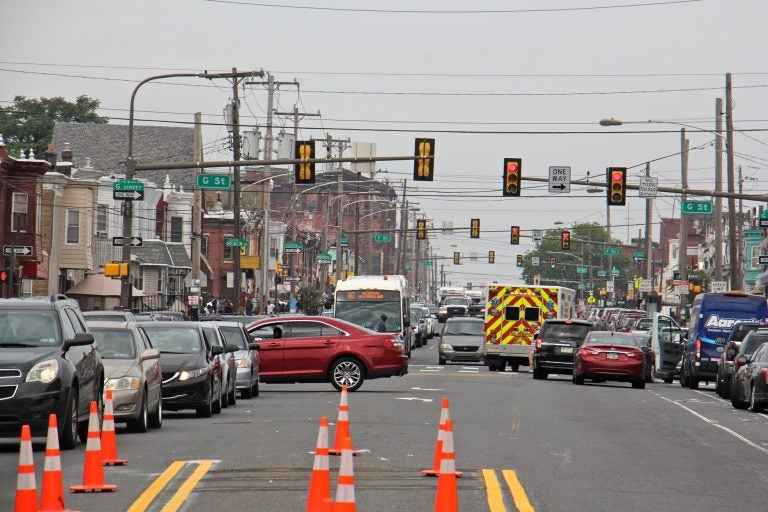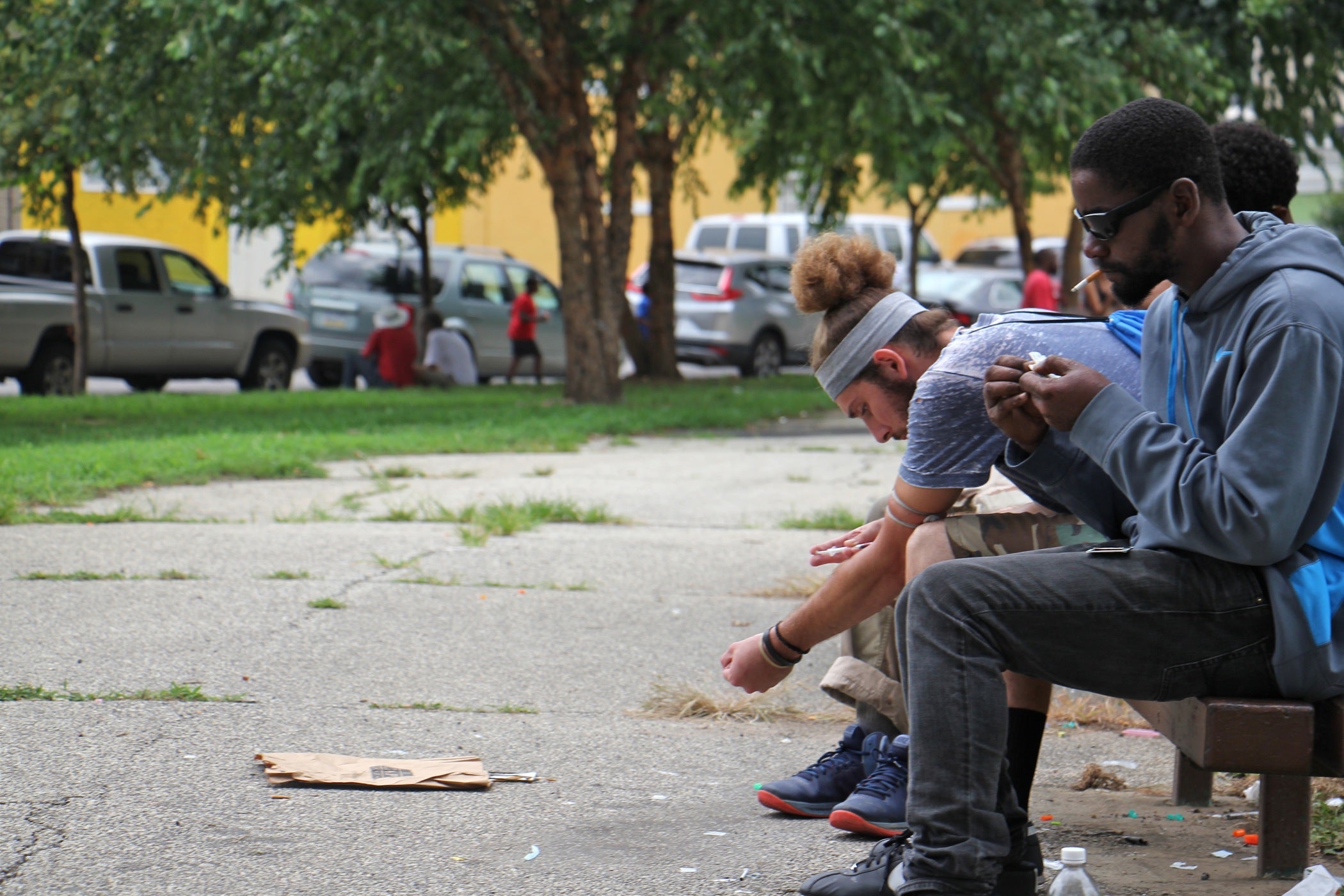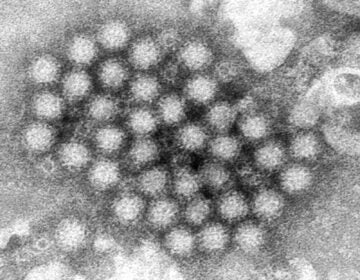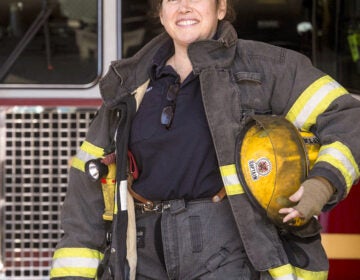Synthetic marijuana detected in drug sample from Philly overdose spike
Sometimes known on the street as 'K2,' synthetic cannabinoids are a growing problem in Philadelphia.

An ambulance threads through traffic on Allegheny Avenue, an area that experienced an uptick in overdoses apparently caused by heroin cut with a synthetic cannabinoid. (Emma Lee/WHYY)
In Kensington’s McPherson Square Friday morning, Michael, a burly guy in a white tank top, recounted his recent relapse to heroin addiction. He shot up from a bag stamped with the words “Santa Muerte.” Feeling lightheaded, he knew something was wrong before dropping to the ground.
“The last thing I remember, I was waking up at Frankford-Torresdale Hospital at 5 o’clock the next day,” he said.
Michael said he was unconscious for a full 24 hours after taking the drugs. Bags with the “Santa Muerte” stamp — which means “holy death” in Spanish — were found with many of the others involved in last weekend’s surge of overdoses.
Pacing around McPherson Square and unsure how to get help getting sober and home to the Northeast, Michael was just a couple blocks away from where other users said the drugs had been sold.
He was one of 165 people who landed in Philadelphia hospitals over two days last weekend for opioid-related overdoses, more than twice as many as usual. According to the city Department of Public Health, the overdose cluster included about 10 deaths, which was in line with the typical rate in the city. The department is continuing to investigate the overdose spike, saying Friday that it had received test results on a drug sample that was connected to the surge.

“One of those packets was tested by a lab and was found to contain, in addition to heroin and fentanyl, a drug called 5-F-ADB, which is a class of drugs called a synthetic cannabinoid,” said Dr. Thomas Farley, city health commissioner.
He said the huge spike in nonfatal opioid overdoses suggested that adverse reactions to an additional drug like this could be responsible for the surge in ER visits. “Synthetic cannabinoids are man-made drugs that try to mimic marijuana, but can be far more dangerous.”
Sometimes known on the street as “K2,” synthetic cannabinoids are a growing problem in Philadelphia, said Farley. They can cause agitation, heart problems, and sudden death. But he said the health department was waiting for more test results to confirm whether they were the main cause of the recent surge in overdoses.
Philadelphia police said they saw another increase in overdoses in Kensington Thursday morning, responding to more than 15 incidents.
Inspector Ray Convery of the Philadelphia Police Department’s East Division said drugs found with people who overdosed Thursday appeared to be connected to the “Santa Muerte” branded bags implicated in the weekend overdose spike.
“We did identify the stamp that was causing the problem, and we immediately put a narcotics protocol into place,” Convery said, adding that police shut down the corner where the drugs were being sold. Things were back to normal by mid-afternoon, he said.
In spite of the surge reported by police, hospital emergency departments did not see more overdose patients than usual throughout the day Thursday, Farley said. He said the department expected to get results soon from testing additional drug samples.
UPDATE: The health department reported additional test results late Friday on drug packets related to last weekend’s overdose spike, concluding, “The Department of Public Health now believes that 5F-ADB was the primary cause of the cluster of patients with these adverse drug reactions.”
WHYY is your source for fact-based, in-depth journalism and information. As a nonprofit organization, we rely on financial support from readers like you. Please give today.





